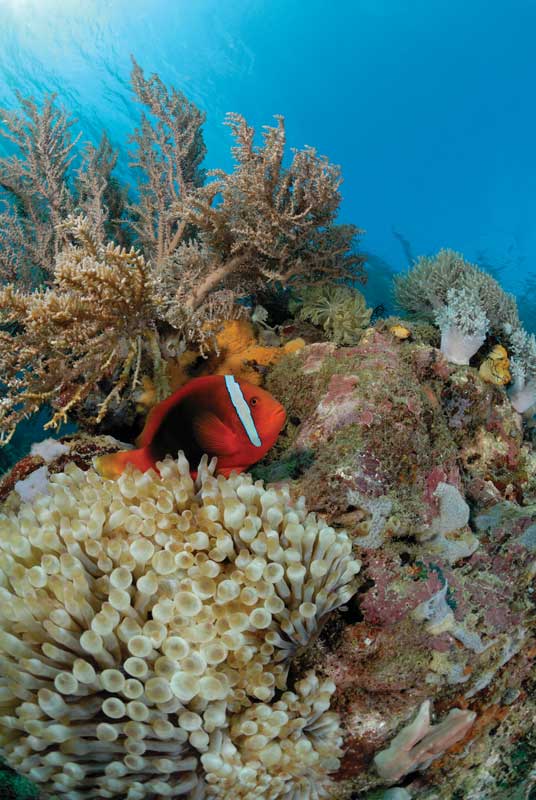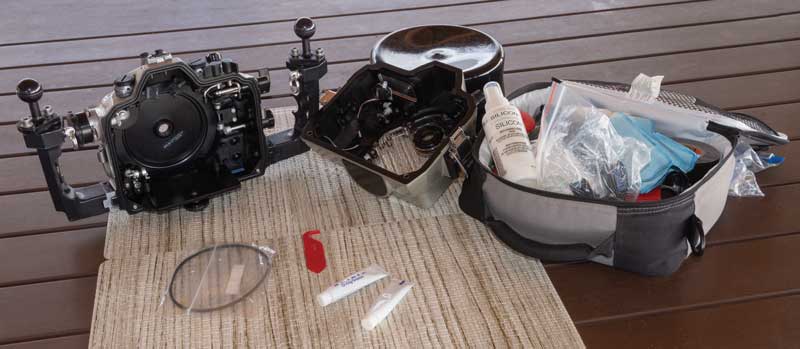A New Decade, A New Season
By Michel Gilbert & Danielle Alary

It seems like we just entered the new century, yet we are already at the beginning of a new decade and a new season. As thoughts of many of us in the Northern Hemisphere turn from skiing to diving, we have a few ideas about what you can do to improve your underwater image gathering this year.
A few years ago, DEMA launched a program called ‘Be A Diver’. While the program was aimed at recruiting new divers, this moto applies to you, too. You may be certified, but are you a diver? We mean a person with knowledge, stamina, and the ability to be efficient in the water. Photography draws your mind and attention. This means diving should be second nature.
Get in the water and swim, work out, practice skills—and don’t wait until the water warms up. Jump in a pool and do it now. There will be many rewards, such as increased confidence, higher proficiency, safer attitude, and muscle memory. All will make you a better photographer. Get your scuba gear ready and test it before going on a trip somewhere. Many years ago we had our equipment serviced just before leaving on a trip. We left in a hurry, only to discover a few surprises once at our destination.
Michel’s computer went crazy on the first dive. Upon checking it, we found good news and bad news. On the plus side, there was a brand-new battery in the compartment. On the minus side, the sealing O-ring of said compartment was missing. A couple of dives later Danielle’s regulator was feeding her a 50/50 mixture. Not 50% O2 and 50% N. It was 50% Nitrox and 50% water….
Check your equipment at home after servicing.
Toys, toys
Most underwater photographers are big on toys. They save during the winter and then buy a new piece of equipment that will turn them into the next Nat Geo hero. First, why not use the equipment you have and spend money on books, courses, workshops, or any means to increase your knowledge? Second, since you are going to practice skills in a pool, why not practice photography?
Your toys are important. They will not work unless you perform some maintenance. You stored everything squeaky clean and well lubricated, right? Even if you did, which is not always the case, take time to disassemble your system and check your O-rings, replacing them if you have any doubts.
If there are scratches on an acrylic port that need attention, buy a restoration product such as the Novus 7100 Plastic Polish Kit. Elbow grease and a few minutes will bring your port back to shiny status.
Check all the knobs and levers. If you feel there is a problem, work on it or send your gear to a reputable underwater photography equipment dealer that can repair it. Check and replace any battery or battery pack that does not seem to perform at its best. It will be very frustrating to abort a dive because a battery pack fails on you. Check all electrical and optical connections. Cables break and electrical contacts corrode. Buy new ones and spares, too. Clean your camera lenses and sensors, update firmware in your cameras. Take test pictures and make sure all is working fine. Finally, perform a leak test in a pool or even in a bathtub.

A new decade
Time flies and we are already in a new decade. In 2010, DSLR resolutions hovered around 14-18 Megapixels and mirrorless offerings were not even a good option. Nikon and Canon were the big players, while Sony tried to convince enthusiasts that it was a still picture company too. Ten years later, Sony is becoming a key player, outperforming the other big ones in certain markets. DSLRs and mirrorless now customarily offer resolutions around 24 Megapixels with flagship ones reaching 60 Mpix and greater.
Huge dynamic ranges increase possibilities and low light performance is such that a photographer from the early 2000s would not believe what you can do. There are more options than ever, yet photography is all about two things: light and subject. Maybe, as a new decade resolution—no pun intended—you should commit to thinking less about megapixels and frames per second and more about colour, composition, subject selection, and proper lighting. Go back to the roots of image-making.
And don’t forget that you should always be respectful of the environment. Breaking coral or sponges to get an image is not worth it. Moreover, ask yourself how can you put your images to good use to support environmental causes. Be kind to fellow photographers, give them time to make their images once you have captured your subject. Yes, it is a big ocean, but we must share it.
We wish you a great start for this season and this new decade. Go out and enjoy being the best ambassadors for the oceans.
Leave a Comment







